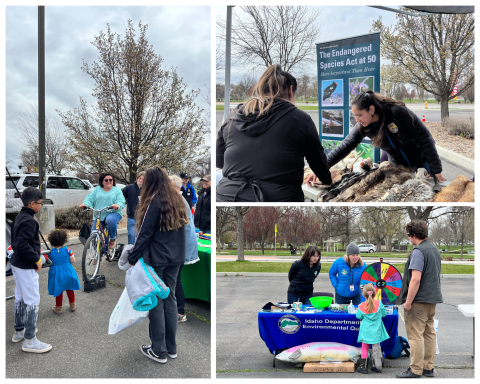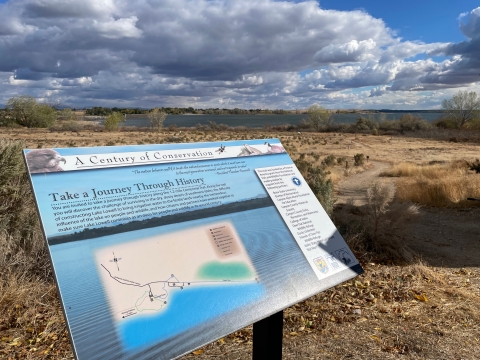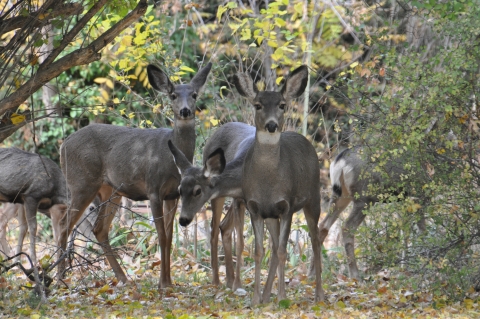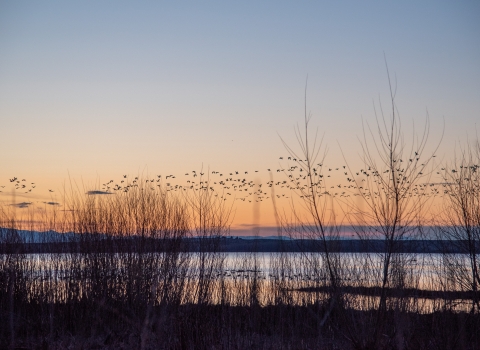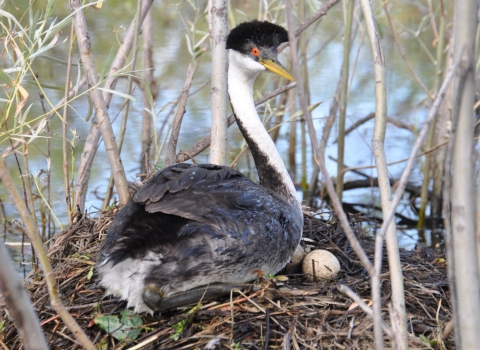There is no one way to connect with nature. For many, the love of nature starts in their own backyard or with the birds flying above their heads as they walk down a city sidewalk. For some, their relationship with nature is rooted in their indigenous heritage and has existed since time immemorial. Still others enjoy family picnics at local parks or hiking wild and untamed lands.
In Idaho’s Treasure Valley, a community is growing together to create more opportunities for people to engage with nature, on their own terms, in safe places with welcoming people. The greatest benefits nature has to offer are derived from the inclusion and engagement of a diverse community.
The Treasure Valley is one of the fastest growing places in the country – the two counties that make up the valley have grown by over 20% during the last few years. Bordered by the Boise Mountains to the North and the Owyhee Range to the South, the valley is where the Payette, Boise, Weiser, Malheur, Owyhee, and Burnt Rivers meet and join with the Snake River. The rich natural resources have benefited people and wildlife. But as the valley trades wild spaces for more urban ones, how people engage with nature is changing as well.
The Treasure Valley Urban Conservation Partnership (TVUCP) is a coalition of local organizations that support equitable and welcoming opportunities to learn and engage with nature. The partnership will foster community connections, steward natural spaces and build resilience to the effects of climate change climate change
Climate change includes both global warming driven by human-induced emissions of greenhouse gases and the resulting large-scale shifts in weather patterns. Though there have been previous periods of climatic change, since the mid-20th century humans have had an unprecedented impact on Earth's climate system and caused change on a global scale.
Learn more about climate change and other threats to wildlife. To form the partnership, staff from Deer Flat National Wildlife Refuge have been collaborating with Canyon County Parks, Cultural and Natural Resources, Idaho Department of Parks and Recreation, Nampa and Caldwell School Districts, Peques Nature Club, Bogus Basin, COMPASS – Community Planning Association of Southwest Idaho, Friends of Deer Flat Wildlife Refuge, the Hispanic Cultural Center of Idaho and others.
“I think that if outdoor places and activities are truly welcome, safe, and inclusive, we must learn from diverse voices to co-create and implement a collective vision,” said Devyn Hallamore, the refuge’s community conservation ambassador and member of the Palouse-Clearwater Environmental Institute AmeriCorps. Hallamore helped draft the TVUCP’s vision, along with partners and other refuge staff, including Refuge Manager Eddie Owens. “It’s important to take the time and listen to our community,” said Owens. “Working with our partners, we can expand our ability to provide all Americans with nature-based opportunities.”
Congress has charged the National Wildlife Refuge System to consider if and how each refuge could provide for the public. It is an essential part of the benefit the Service provides to Americans.
Deer Flat National Wildlife Refuge provides a haven for people to connect with nature – hunting along the Snake River Islands unit, boating and fishing at the Lake Lowell unit, or hiking with their family along the trails. Established in 1909, it is one of the first national wildlife refuges in the country. For over 110 years, migratory birds and wildlife have depended on Deer Flat National Wildlife Refuge as a safe place to forage for food, rest, and raise their young – and as a safe place for people to enjoy nature and their public lands.
The western United States’ sagebrush country encompasses over 175 million acres of public and private lands. The sagebrush landscape provides many benefits to our rural economies and communities, and it serves as crucial habitat for a diversity of wildlife, including the iconic greater sage-grouse and over 350 other species.
Learn more about sagebrush with a group of young visitors at Deer Flat National Wildlife Refuge in Nampa, Idaho during an Urban Wildlife Conservation Program event.
Earlier this year, Secretary of the Interior Deb Haaland announced a $1 million investment for conservation partnerships during a ceremony at the refuge. The money will be added to the refuge’s yearly base budget to support ongoing efforts to provide more diverse and equitable opportunities for the community to engage with nature. During the event, Service Director Martha Williams noted, “Working in partnership with local communities and stakeholders is critical to the successful conservation of wildlife and to creating more outdoor opportunities in nature-deprived communities."
This funding is a part of the National Wildlife Refuge System’s Urban Wildlife Conservation Program (UWCP), which supports 101 urban refuges across the country that host more than 11.7 million people a year. The program facilitates long-term, place-based collaborative partnerships engaging communities in conservation on and off Service lands.
“One of the major indicators of a welcoming and safe outdoor place or activity is inclusive representation, something I currently think of as one of the greatest priorities [for our work],” said Hallamore. The TVUCP is working together to engage the community and provide opportunities for people to get to know nature on their terms.
“One of the things that I’ve learned during my career is that we can do more together than we can apart,” said Owens. “The more we reach out and include our community, the more able we will be to successfully meet our mission to ensure a future where Americans benefit from fish, wildlife, plants and the habitats they depend on.”


